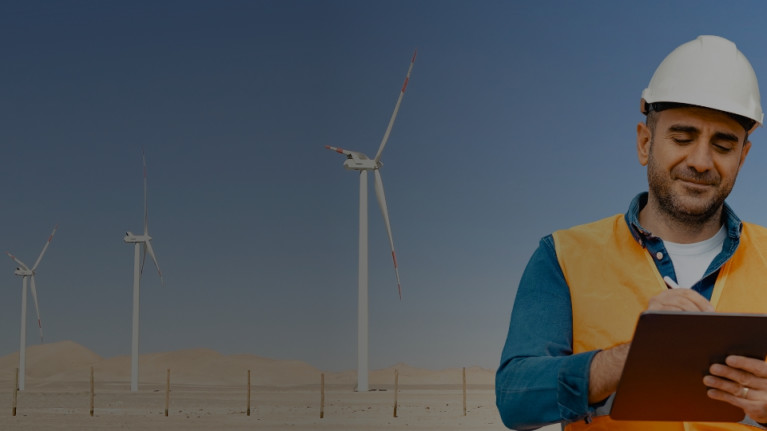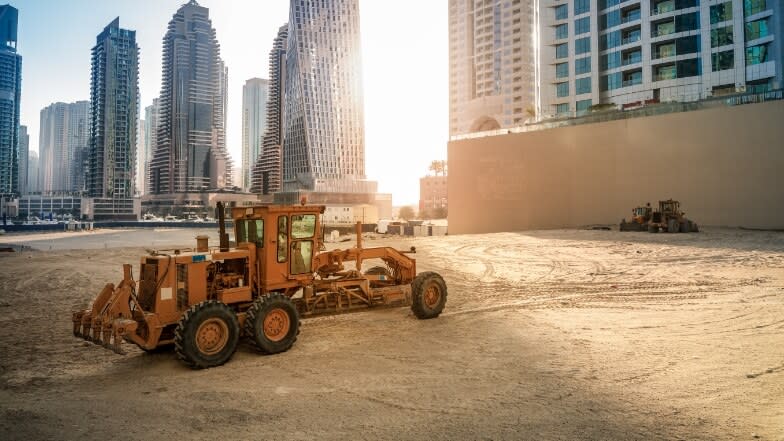
Article
The problem solving potential of sustainable construction
It’s hard not to be reminded daily of the urgency of the climate crisis. Especially for those of us working in construction.

Construction has a major impact on the world’s environment. In fact, construction accounts for 70% of the solid waste generated in the UAE, with Dubai alone producing nearly 5,000 tonnes every day. A figure drastically out of step with the region’s focus on sustainability.
Chapter 1
Construction must do more to meet its goals
There has been some progress, with the KSA recently curbing construction waste levels and launching the first investment station for sorting and recycling these materials. But with a substantial mountain to climb, construction must do more if it is to meet its own, the region’s, and the planet’s, sustainability goals.
Key to this fight is understanding the potential of sustainable construction. The benefits to the planet are paramount, but by looking at the wider impact going greener can have, we will find increasingly undeniable arguments to do so.

Chapter 2
Putting a stop to waste
The shortage of building materials is a major issue for the construction industry. Following the pandemic, big plans for recovery are underway but for all the targets, a lack of materials is threatening ambitions.
The answer is, of course, to waste less. And some regions have their plans underway, with one of the goals of UAE Vision 2021 focussing on waste management. The next marker in this plan being to reduce materials headed to landfill by 98% by 2030.
In trying to diagnose where the problem stems from, Ljubomir Jankovic, a UK-based professor of advanced building design, points to how fragmented and silo-prone the industry is. When information exists in silos, there’s no single source of truth for a construction project. This can lead to work being scrapped and done again according to a different set of data. A costly consequence that leads to high levels of wastage.
But while Jankovic’s evaluation may be a bleak one, we shouldn’t lose hope as these are issues easily remedied by scaling up the tools we use.
Construction technology goes some way to helping us improve our processes, but to stamp out information silos we need the level of joined-up communication only platform technology brings.
One unified source of truth can help drive down waste, and 75% of Procore users say it has helped them reduce the amount of rework taking place across their projects.
This is managed through a combination of streamlined workflows, data visibility and a 360-degree view of projects. Something BW: Workplace Experts found invaluable in meeting their Defect Free pledge.
That’s because having eyes on every corner of your project, and working in real-time, means you avoid the errors and repeat work that drives waste up. And instead, any work you undertake happens in harmony with the project’s overarching lifecycle.
With huge predictions for escalating global construction waste, putting a stop
Chapter 3
Recruiting for green skills
The skills shortage in construction is no secret, with the Middle East needing an influx of skilled workers in some specialisms to meet demand. But by looking to change the skill set we hire for, we can address this shortage and move closer to carbon zero.
We’ve already seen how, via broader initiatives in the Middle East, sustainability can lead to a windfall of job opportunities. While in their global Green Skills Report, LinkedIn states how construction has one of the highest intensity of green skills needed.
By recruiting for green skills, construction can transform its personnel shortage and its carbon footprint by installing more sustainably-conscious candidates in roles.
But to do this, construction companies must also think beyond the role and focus on the technology and tools they are equipping their team with. Sustainability officers, for instance, when plugged into a technology platform solution can monitor carbon emissions, avoid rework and ensure materials don’t go to waste.
By having a larger role in your company, technology will also be a considerable draw to top talent. The Middle East has already outlined its plans to improve the digital skills of its citizens, with the UAE’s ‘100 Coders Every Day’ and the KSA’s initiatives worth over $1.2bn that promises to improve the digital skills of 100,000 youngsters by 2030. The construction industry must ensure it is in a place to make the most of this new wave of young, digital talent.

Chapter 4
Changing perceptions
Construction in the Middle East is battling with an image crisis. There is a considerable gender imbalance and women represent just over 10% of the global construction workforce, despite it being widely acknowledged that they are integral to moving the needle when it comes to acting on climate change.
As a prominent female leader in construction, Dubai-based Anita Nouri, CEO and business development director of Green Energy Solutions and Sustainability, said how the industry's male-dominance should not stop anyone from pursuing a future in the sector.
Nouri went on to say that, “Women think differently than men” and how “together we think better.”
As is the story with most of the world, construction in the Middle East is often deemed a male-only job. Yet by diversifying the kind of industry construction promises to be–namely, a sustainable one–we can cause a perception change to attract more women into the industry and change the culture enough to support them to have longstanding careers there.
Diverse teams are much more likely to result in creative solutions. And while sustainability might be a best-case argument for more women in construction, the benefits go much further.
As we’ve seen, sustainability is not simply a two-dimensional argument. It offers an array of benefits that start by solving one problem, but go on to address many more. By building sustainability into how we work, we stand to develop new, innovative ways of tackling the pain points of the supply chain and labour shortage, while bringing more much-needed diversity into construction.
But without first changing our mindset, and employing the tools and technologies to drive this change, we’ll not only miss out on these benefits, but also on the sustainability targets that are now part and parcel of compliance.
This is why now is the time to ensure your business embraces sustainability in a way that not only benefits the planet, but the industry too.
